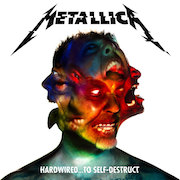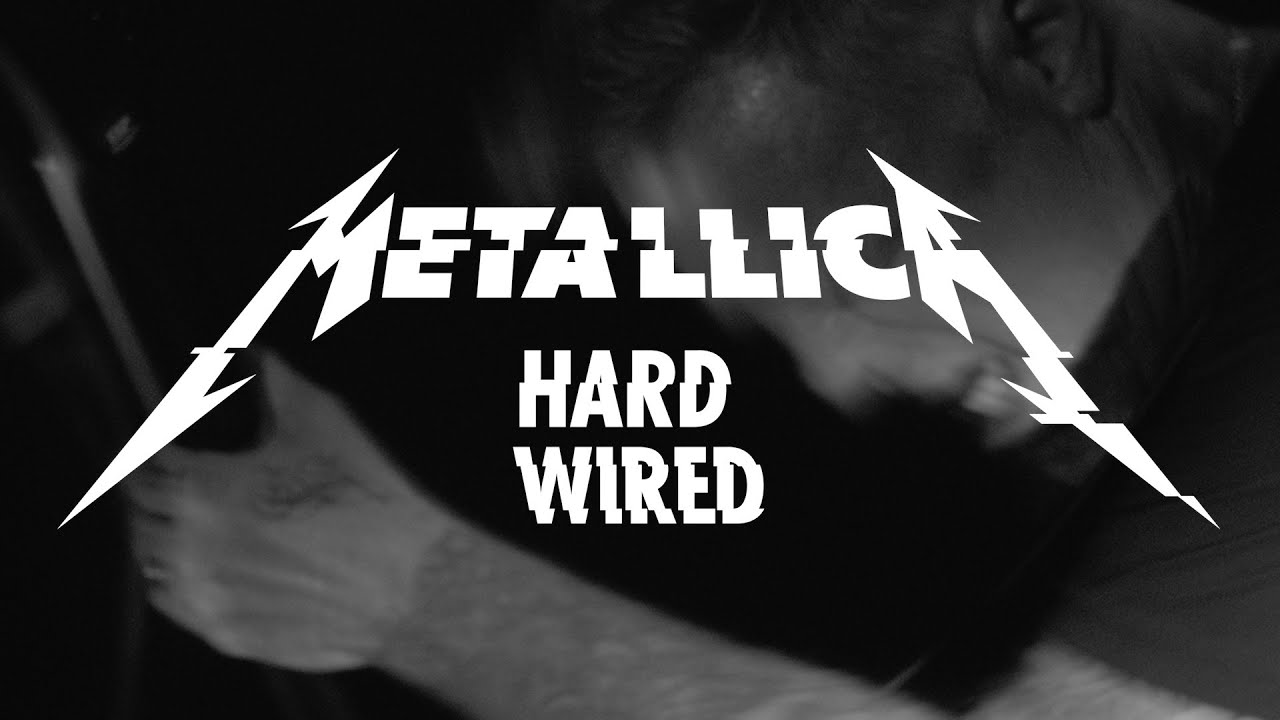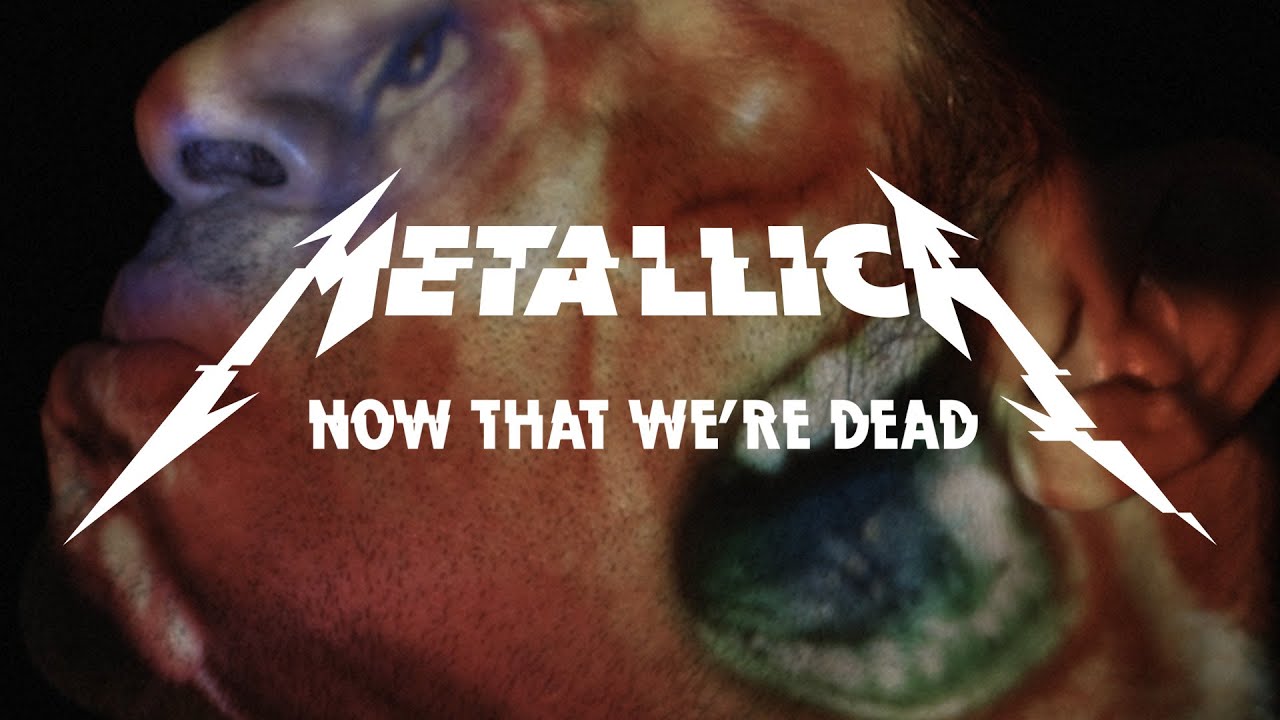When I first heard Death Magnetic in 2008, I didn’t know that it was Metallica. As Ride the Lightning-worshipping riffs and drum beats—all captured with a mock-80s production style—spilled from a radio at work, I thought, “Damn, this band is really ripping off Metallica.” And then I realised that it was Metallica ripping off Metallica.
Ever since The Black Album came out, there’s been a sizeable chunk of Metallica’s fan base that has wanted the band to return to its thrash roots—to recapture the fight-or-flight intensity from the first four albums. Like many metalheads, my brain nearly exploded when I first heard Master of Puppets. I became an instant and devout disciple of old school Metallica, even going so far as to get the Damage Inc. skull tattooed on my forearm when I was 19.
Of course I became one of those stubborn fans that desperately wanted the group to recreate its original ferocity, even though it’s an inherently flawed (and somewhat insane) notion to want a band to recreate its past over and over. Don’t get me wrong: The Black Album has some kick ass moments. Lars’ bombastic drum sound on that record doesn’t get nearly enough credit. Even Load and Reload have their worthwhile tracks. I’ve just always identified more with the anxiety and anger of the early records. Over the years, I’ve realised that this doesn’t necessarily reflect the quality of post-Black Album Metallica. The band’s radio friendly songs just aren’t my cup of tea. It’s also become nearly impossible to detach Metallica’s records throughout the ’90s from the infestation of mall metal bands—Godsmack, Puddle of Mud, Disturbed, et. al—that built entire careers on ripping off The Black Album.
But 2008’s Death Magnetic threw a curveball, suddenly presenting purists with an unexpected dilemma: what if Metallica actually did try to recapture its old sound? At some point, I made peace with the reality that Metallica would never be the same band it was in the ’80s. But here was Metallica trying to inhabit its former self. 2016’s double-disc LP, Hardwired… to Self-Destruct, follows a similar path.
The hyper-speed drumming, machinegun chugs, deft changes, gruff yells, and drawn-out song structures: objectively, all the elements that defined Metallica’s sound in its early career are there. Gone (for the most part) are the stadium rock anthems on steroids from The Black Album, Load, Reload, and St. Anger. For many fans, The Black Album and signifies a dumbed-down version of Metallica. The early material highlights the members’ technical virtuosity, so that record, which is more concerned with straightforwardness than instrumental wizardry, caught people off guard when it came out. Hardwired… to Self-Destruct does find the band members playing more difficult material again. It’s easy to poke fun at James, Lars, and Kirk as people, but there’s no denying that they are—and have always been—mind-blowingly talented musicians. All told, maybe this is enough to constitute a triumphant return to form. As with Death Magnetic, however, I can’t get past the feeling that there’s something missing on this album.
To be fair, Hardwired… to Self-Destruct is better at mimicking old Metallica than Death Magnetic. Even so, there’s an undeniable hollowness to the record. First track and single ‘Hardwired’ breaks out of the gate with a rabid gallop, which Lars accents with a matching snare pattern. For a few brief moments, it seems as if Metallica might have actually rediscovered its original fury. But the song quickly feels hokey. Bluesy notes that sound like they’re straight from GarageBand bookmark the main riff, and Hetfield’s vocals bounce to a cheesy, sing-along rhythm. In a bygone era, he yelled about hopelessness with murderous verve. Now, lyrics like, “We’re so fucked / Shit out of luck / Hardwired to self-destruct,” mostly seem contrived. As with many songs on the record, ‘Hardwired’ comes across as more of a product than a genuine piece of music.
‘Atlas, Rise!’ tries to recreate the mid-tempo snarl of Kill ‘Em All but fails to awaken that primordial urge to destroy that permeates Metallica’s first LP. The chorus pulses with a catchy, ‘Fuel’-style groove, which is followed by dual harmonies that will make you want to steal a motorcycle. But Hetfield’s too-polished shouting and delivery wraps the song in a cute little bow that would’ve made Kill ‘Em All-era Metallica cringe.
Very much in the vein of St. Anger, the drum production on Hardwired… To Self-Destruct is the stuff of recording engineers’ bad dreams. Lars might as well be whaling away on a plastic bag instead of a snare, and, when he jumps into double-bass rolls, it sounds like suction cups getting pressed onto a piece of glass and pulled off in rapid succession. Unfortunately, these sounds are given the spotlight in ‘Now That We’re Dead’.
During the next three songs, Metallica continues to pay homage to itself. The nostalgia nerve is a sensitive one. When pinched, subjectivity dissipates, which is why it can so easily be used to manipulate. During these moments, the metalhead in me instinctively hops onboard. But these appeals to nostalgia can’t disguise the songs’ essential dullness for long. ‘Confusion’, the first track on the second disc, is perhaps the most grotesque example. It begins with a regurgitated version of the chugging march that opens ‘Am I Evil’. But that song, which Metallica originally released as part of a two-song single in 1984 and then re-released on 1998’s Garage, Inc., is a Diamond Head cover. So ‘Confusion’ is essentially Metallica doing a cover of Metallica doing a cover.
Hardwired… To Self-Destruct is the first Metallica album without any writing contributions from Kirk Hammett, which comes across most clearly in the opening of the atrociously-titled “Manunkind.” Hammett has time and again exhibited his prowess for composing delicate clean sections. But Hetfield’s lead for this track totters like a drunken sailor and belligerently trips on Trujillo’s bass notes.
‘Here Comes Revenge’ is the strongest song on either disc, largely because it doesn’t try so hard to recreate Metallica of yore. The cut charges with the anthemic harmonies of Load, which, weirdly enough, feels like a breath of fresh air. “Am I Savage?” then opens with a stale facsimile of the intro to ‘Fade to Black’. The desperation that defines this release comes back all over again.
Through its lacking, however, Hardwired… to Self-Destruct works as a reminder of why Metallica’s first four albums are so untouchable. In its early days, Metallica didn’t write songs about war, political disillusionment, and aggression because fans demanded it. Lars, James, Cliff, and Kirk were angry, death-obsessed young hessians who, no matter how hard they tried to look on the bright side, couldn’t help but focus on the negativity of the world. Hardwired… to Self-Destruct, on the other hand, is a tired and somewhat cynical album that’s simply responding to market demand. It’s kind of like when your dad busts out his old-school skate board—cool for a bit, but, after day three of him “getting back into it” (he also refuses to change out of his old Pink Floyd shirt), you just want him to stop.




